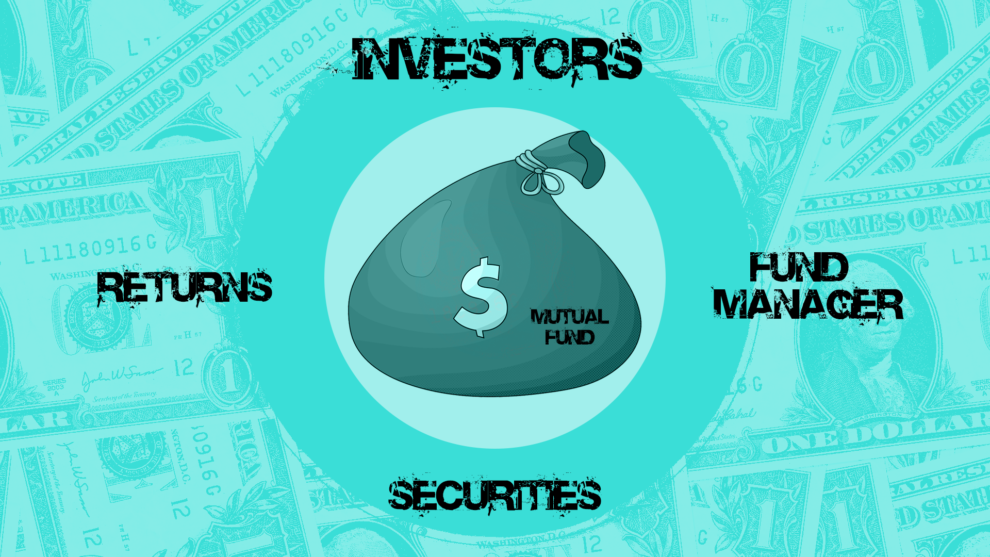Mutual funds are an excellent investment choice to consider if you’re investing. They offer diverse investment options that can help you grow your money over time. But what exactly are mutual funds, and how do they work? Simply put, a mutual fund is a collection of different stocks, bonds, and other assets that a professional fund manager manages.
Investing in a mutual fund is essentially pooling your money with other investors; this gains access to a broader range of investments than you can afford on your own. In this way, mutual funds can be a great way to diversify your portfolio without doing much research or making complicated investment decisions. Whether you’re looking to save for retirement, build up your emergency fund, or start investing, mutual funds are worth considering.
Benefits of investing in mutual funds
There are many benefits to investing in mutual funds. One of the most significant is diversification. When investing in a mutual fund, you’re buying a small piece of an extensive portfolio of investments; this means that your money is spread across many different companies and sectors, which can help to reduce your overall risk. Also, somebody manages the mutual funds professionally, so you have an expert making investment decisions on your behalf; this can be especially helpful if you’re new to investing and have limited experience in the markets.
An additional benefit of mutual funds is they can be very convenient. As we mentioned earlier, mutual funds allow you to gain exposure to many different investments without doing much research or making complicated decisions. Additionally, you can typically buy and sell mutual funds through a brokerage account to easily manage your assets online; this can be especially helpful if you’re busy and need more time to manage your portfolio.
Finally, mutual funds can be very cost-effective. While fees are associated with investing in mutual funds, these fees are typically much lower than those associated with other investment options, such as buying individual stocks or working with a financial advisor. Additionally, many mutual funds have low minimum investment requirements, meaning you can start with just a tiny amount.
Types of mutual funds
There are various options of mutual funds available to invest in. Each option has its own investment strategy and objectives. Here are the most common types of mutual funds:
Equity funds: These funds invest primarily in stocks, which can be classified further into large-cap, mid-cap, and small-cap funds, depending on the size of the companies they invest in.
Bond funds: These funds you invest primarily in bonds, which are debt securities issued by companies or governments. They can be classified further into corporate, municipal, and government bond funds.
Balanced funds: invest in stocks and bonds to balance risk and return.
Index funds: These funds track a specific index, such as the S&P 500. They help to give investors the same returns as the underlying index.
Sector funds: These funds invest primarily in a specific industry or sector, like the technology or healthcare sectors, for example.
How mutual funds work
When somebody invests in a mutual fund, they’re buying a small piece of an extensive portfolio of investments. The professional fund manager manages the funds and is responsible for deciding what investments to make on behalf of the investors in the fund. The fund manager uses the money that investors have contributed to buy a mix of stocks, bonds, and other assets that align with the fund’s investment objectives.
As an investor, you will own a certain number of shares in the mutual fund, which represent your portion of the fund’s overall assets. The value of your shares will rise and fall, which depends on the performance of the investments held by the fund. If the investments perform well, the value of your shares will increase. If the investments perform poorly, the value of your shares will decrease.
Mutual fund fees and expenses
While mutual funds can be very cost-effective, there are fees associated with investing in them. The fees vary depending on the type of fund you invest in and the specific fund manager you choose. These are a few common fees and expenses associated with mutual funds:
Expense ratio
The fund manager charges an annual fee to manage the fund; this fee is a percentage calculated into the overall fund. For example, the fund manager may take 20 percent out of the whole 100 percent. The percentage he takes is what he considers fair for the work that he has to do. These fees vary from one fund to another.
Sales load: A fee is charged by some mutual funds when you buy or sell shares, which usually expresses as a percentage of your investment or redemption.
Redemption fees: Some mutual funds charge a fee for selling your shares within a certain period after buying them.
Account fees: Some mutual fund managers charge fees for maintaining your account or making transactions.
Taxes: If your mutual fund investments generate dividends or capital gains, you may be subject to taxes on those earnings.
Before investing, it’s crucial to understand the fees associated with the mutual fund you’re considering. Although fees are an essential part of investing in mutual funds, they can impact your returns over time if you’re not careful.
Mutual fund performance and returns
The performance of a mutual fund typically measures by its returns. A fund’s returns are the gains or losses it generates over a given period, usually expressed as a percentage. When evaluating the performance of a mutual fund, it’s essential to look at its short-term and long-term returns. Short-term returns can be volatile and may not indicate the fund’s long-term performance.
When evaluating the performance of a mutual fund, it’s also essential to compare it to its benchmark. A benchmark is a standard that measures the fund’s performance. For example, if investing in an equity fund, compare the performance to the S&P 500. If the fund consistently underperforms its benchmark, it may be a sign that the fund manager needs to make better investment decisions.
Risks associated with mutual funds
While mutual funds can be great for diversifying your portfolio and gaining exposure to a wide range of investments, like all investments, they also come with risks. A few common threats to be aware of are:
Market risk: The value of your mutual fund shares will rise and fall depending on the performance of the investments held by the fund. If the market experiences a downturn, the value of your shares may decline.
Manager risk: The performance of a mutual fund largely depends on the fund manager’s skill. The fund’s performance may improve if the manager makes good investment decisions.
Fees and expenses: While mutual fund fees are typically lower than those associated with other investment options, they can still eat into your returns over time.
Liquidity risk: If you need to sell your mutual fund shares quickly, you may need help at a fair price.
Inflation risk: If inflation exceeds your mutual fund’s returns, your investments’ purchasing power may decline.
Creating a mutual fund investment plan
If you’re interested in investing in mutual funds, it’s essential to have a plan in place. These are a few factors you should bare in mind when you create a mutual fund investment plan:
Determine your investment goals: What are you investing for? Is it a retirement plan, a down payment on a house, or another long-term goal? Your investment goals will help you determine the types of mutual funds to invest in.
Assess your risk tolerance: How much risk are you willing to take? If you’re young and have a long investment horizon, you can tolerate more risk than someone close to retirement.
Choose your mutual funds: Once you’ve determined your investment goals and risk tolerance, you can start researching mutual funds that align with your needs.
Monitor your investments: It’s essential to regularly review how your mutual fund investments are performing and make adjustments as you need to.
Tips for investing in mutual funds
Essential tips to keep in mind when investing in mutual funds:
Choose low-cost funds: Find mutual funds with low expense ratios and no sales loads.
Diversify your portfolio: If you invest in a variety of mutual funds, you can reduce your overall risk.
Avoid chasing returns: Don’t invest in a mutual fund because it has had high returns. Past performance does not mean it will have the same results in the future.
Stay the course: Don’t panic and sell your mutual fund shares during a market downturn. Stick to your investment plan and stay invested for the long term.
Comparison with other investment options
While mutual funds can be a great investment option for beginners, other options exist. Here are some common alternatives to mutual funds:
Individual stocks: Buying individual stocks can be a good option if you’re willing to do the research and make your own investment decisions.
Exchange-traded funds (ETFs): ETFs are similar to mutual funds because they allow you to gain exposure to various investments. However, they are traded like individual stocks and may have lower fees.
Robo-advisors: Robo-advisors or (roboadvisors) is an automated investment platform that monitors algorithms to manage your investments. They can be a good option if you’re looking for a hands-off approach to investing.
How to buy mutual funds
Buying mutual funds is relatively easy. Here’s a step-by-step guide:
- Open a brokerage account: First of all, you must open a brokerage account. (Ideally, with a reputable broker.)
- Choose your mutual funds: Research mutual funds, considering your investment goals and risk tolerance.
- Place your order: Once you’ve selected your mutual funds, you can order online or over the phone.
- Monitor your investments: Regularly review the performance of your mutual fund investments and make adjustments as needed.
Some of the Best Mutual Funds Apps:
Many more apps are out there; these are great if you are interested in investing in mutual funds. Or even just for learning purposes.
Conclusion
Mutual funds can be a great investment tool for beginners. They offer diverse investment options, are professionally managed, and can be cost-effective. However, it’s essential to understand the risks associated with mutual funds and the fees and expenses involved. By creating a mutual fund investment plan and following a few simple tips, you can use mutual funds to help achieve your investment goals. Remember to regularly review the performance of your investments and make adjustments as needed.













